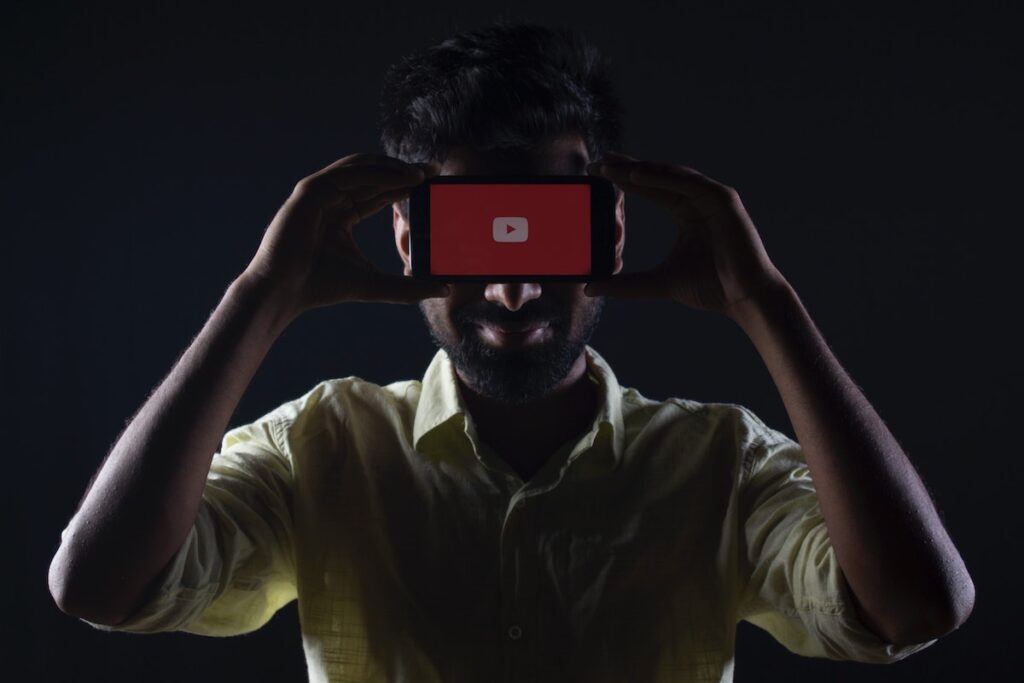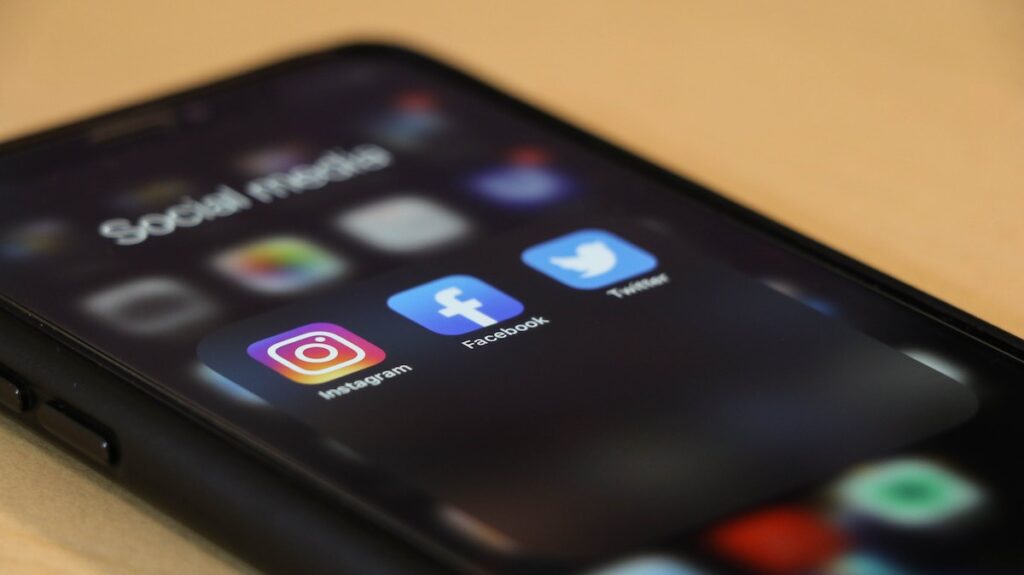
‘Contagion’ is an unsettling word, particularly as we’re currently living through the COVID-19 pandemic. ‘Suicide contagion’ is an equally worrying phrase and is a phenomenon where exposure to suicide or suicidal behaviour, such as through the media, can increase these behaviours in some people (Gould, 2001). Reporting of celebrity suicide in the media can increase the risk of suicide by 13% in the period shortly after, and when the method is reported it is associated with a 30% increase in death by the same method (Niederkrotenthaler et al, 2020; Mental Elf Blog).
Social media allows users to create content and connect with others. It is quite popular among young people, while a UK population-based study of 21-year olds indicates that 22.5% have either inadvertently accessed self-harm and suicide related content online, or actively sought it out (Mars et al. 2015). Among children presenting to hospital for self-harm or suicide, self-harm related internet use was 26% (Padmanathan et al., 2018). Self-harm in young people is a growing public health concern, is on the rise (Morgan et al., 2017), and is a leading risk factor for later suicide (Hawton et al., 2020). It is possible the rise is due to adolescents living in more stressful times, and because of exposure to online media (Morgan et al., 2017).
A recent study by Khasawneh et al. (2020) examined the social media portrayal of The Blue Whale Challenge; an alleged suicide game aimed at teenagers. The authors aimed to understand:
- How is the Blue Whale Challenge presented and described on YouTube and Twitter, and
- To what extent are the YouTube videos compliant with the nine Safe and Effective Suicide messaging guidelines provided by the Suicide Prevention Resource Centre (SPRC). Examples of the SPRC guidelines include; avoid glorifying suicide, avoid focusing on personal details of people who die by suicide, and provide information on where to seek help.

Suicide contagion is a concerning phenomenon where exposure to suicide or suicidal behaviour, such as through the media, can increase these behaviours in some people.
Methods
The authors selected the platforms of YouTube and Twitter to collect their data. Results were sorted by YouTube’s ‘relevance’ function, and comments were sorted by the ‘top comment’ function. For Twitter, posts were collected randomly from Feb 2012 to Feb 2018 using hashtags related to the challenge.
The authors employed a thematic analysis approach to code the content (Braun & Clarke, 2006; Clarke & Braun, 2013). They used an iterative qualitative coding process, starting with two researchers independently reviewing the raw data, independently identifying codes, collaborating on disagreements, and ending in a set of themes that fit most of the data. Data saturation was reached when no new codes appeared.
Two authors deductively coded the YouTube videos based on the SPRC safe messaging guidelines to assess their compliance, following guidance by Saldaña (2015). They compared the videos with the number of views.
Results
The authors analysed 60 publicly posted YouTube Videos, 1,112 YouTube Comments, and 150 Twitter posts. The wording of the quotes was paraphrased to protect the identity of the subjects.
Four common themes were identified:
- Raising Awareness and Discouraging Participation
83% of videos were news reports or bloggers that started videos by listing the different names for the challenge and statistics on people dying by suicide due to the game. The majority of Twitter posts (68.7%) were against the challenge and suggested that parents should pay more attention to children’s safety. The high percentage of content in this theme suggested that users on these two platforms highlighted the danger of the challenge. - Expressing Sorrow for People with Mental Health Difficulties
47% of videos presented pictures of people affected by the challenge. Comments (11.1%) expressed sorrow and support for people with mental health issues. Twitter posts (3.3%) expressed that people participating in the challenge have mental health difficulties. - Criticising or Making Jokes about the Participants or the Challenge
10% of videos mentioned that adolescents participating want to “show off” and criticised them harshly making sarcastic comments. 47.7% of comments criticised the participants “How can someone lose sense and be manipulated by others like that?”. 16% of Twitter posts were sarcastic about the challenge itself. - Providing Experiences and Asking to Play
60% of videos spoke in detail about someone who had participated or asked to play the game themselves. 36 videos interviewed parents and provided pictures of the participants’ bodies showing instances of self-harm. 16% of comments were about asking to participate. Only 2 Twitter posts fell within the theme (0.7%).
Deductive coding of YouTube videos against the SPRC Safe and Effective Guidelines indicated:
- Only 8 videos (13%) were considered more safe than unsafe, adhering to 7 or more of the guidelines. Only 5 of the videos blocked minors from viewing the content.
- 50% of the top 20 viewed videos (46,099,923 views in total) were more unsafe than safe, meaning they violated at least 6 of the 9 guidelines.
- Guidelines most frequently violated were ‘highlight effective treatments for underlying health problems’, ‘emphasise seeking help and provide information for where to find it’, and ‘avoid presenting overly detailed descriptions of suicide victims.’

Half of the top viewed YouTube videos about the Blue Whale Challenge were more unsafe than safe and easily accessible to children.
Conclusions
It’s not possible to fully conclude from this study that YouTube and Twitter content about the Blue Whale Challenge had suicide or self-harm contagion ‘effects’, despite the title of the paper alluding to this.
The authors concluded:
These posts might have the problematic effect of normalizing the blue whale challenge through repeated exposure, modelling, and reinforcement of self-harming and suicidal behaviours, especially among vulnerable populations such as adolescents. […] The SPRC guidelines need to be more widely disseminated and more efforts are needed to […] educate the average person on messaging guidelines as well as factors that encourage contagion effects.

Online content has the potential to normalise the Blue Whale challenge through repeated exposure, modelling, and reinforcement of self-harm and suicide behaviours, particularly among vulnerable adolescents.
Strengths and limitations
This is the first study to systematically describe the portrayal of the Blue Whale Challenge through social media. Researchers analysed a wealth of YouTube and Twitter content, following established thematic analysis guidance. They also followed guidance for deductive coding of the YouTube videos (Saldaña, 2015). Furthermore, there is a good rationale for selecting Youtube and Twitter, as they are highly popular social media platforms (Maina A, 2016).
However, some limitations do apply. The Blue Whale Challenge asks players to be ‘secretive’ about their self-harm and was conceived on a Russian platform. It is possible that other online platforms could have provided rich data and there might be secret hashtags associated with the game. YouTube videos were selected via the ‘most relevant’ function. Selecting videos via a more random approach with more keywords might have found further relevant content.
A strength of using public social media sites to collect data is not having to seek ethical approval to analyse content (because implicit consent is assumed given that Twitter and YouTube are largely public platforms). Nevertheless, it is not without ethical implications. As a researcher of adolescent self-harm, I’m interested in the ethics of collecting data on a sensitive topic. The authors paraphrased the quotes they used to keep the user’s identity a secret. It would have been interesting to mention in the discussion about the ethical implications of using public comments and further comment on their covert approach. It is not clear if the paraphrasing was quality checked by another researcher.
Finally, not looking at interactions (e.g. number of retweets on Twitter) removes some of the richness of the data. The words ‘social’ and ‘contagion’ lend themselves to the idea that Social Network Analysis (SNA) could be a useful way to look at the contagion effects. I intend to use SNA as part of my PhD, looking at the influence of peer networks in adolescent self-harm. It would be equally interesting to examine contagion effects, through social media, via SNA.

Online platforms other than YouTube and Twitter might provide rich data on the Blue Whale Challenge. Although implicit consent is implied from public social media platforms, there are still ethical implications to consider when collecting data.
Implications for practice
The findings highlight the importance and need to educate young people, parents, teachers, and the public about the potential self-harm and suicide contagion effects of social media. Samaritans have co-designed online safety resources with young people to help them stay safe online in relation to suicide and self-harm content. However, we need more than just guidelines; we need to make these accessible to the young audience through active promotion.
The UK government has released a response to online harms. From a policy perspective, when searching for videos related to suicide and self-harm, resources for seeking help should be provided. Health and mental health professionals working with young people who engage in self-harm should also inquire about their social media and internet use. It would also be useful to promote the SPRC and Samaritans guidelines to those who are influential on social media, such as celebrities and influencers.
Further research is needed to explore the reach of the Blue Whale Challenge and other viral challenges, the ethical implications of using public online content, the contagion effects the challenges may have on adolescents, and interventions needed.

The study highlights the need to not only produce online safety resources in relation to suicide and self-harm for young people, but also make them accessible to them through active promotion, in order to educate them with the skills they need to stay safe online.
Statement of interests
None.
Links
Primary paper
Khasawneh A, Madathil KC, Dixon E, Wi P, & Roth R (2020) Examining the Self-Harm and Suicide Contagion Effects of the Blue Whale Challenge on YouTube and Twitter: Qualitative Study. JMIR MENTAL HEALTH, 7(6), 15.
Other references
Braun V & Clarke V (2006) Using thematic analysis in psychology. Qualitative Research in Psychology 2006, 3(2), 77–101.
Clarke V & Braun V (2013) Teaching thematic analysis: Overcoming challenges and developing strategies for effective learning. The Psychologist 2013, 26(2).
Gould MS (2001) Suicide and the Media. Annals of the New York Academy of Sciences 2001, 932(1), 200–224.
Hawton K, Bale L, Brand F, et al (2020) Mortality in children and adolescents following presentation to hospital after non-fatal self-harm in the Multicentre Study of Self-harm: a prospective observational cohort study. Lancet Child Adolesc Health 2020;4(2):111-120
Lewis SP, Heath NL, St Denis JM & Noble R (2011) The Scope of Nonsuicidal Self-Injury on YouTube. Pediatrics 2011, 127(3), e552–e557.
Maina A (2016) 20 Popular Social Media Sites Right Now. Small Business Trends. URL: https://smallbiztrends.com/2016/05/popular-social-media-sites.html
Mars B, Heron J, Biddle L. et al (2015) Exposure to, and searching for, information about suicide and self-harm on the Internet: Prevalence and predictors in a population based cohort of young adults. Journal of Affective Disorders 2015, 185:239–45.
Morgan C, Webb RT, Carr MJ. et al. (2017) Incidence, clinical management, and mortality risk following self harm among children and adolescents: Cohort study in primary care. BMJ 2017;359.
Niederkrotenthaler T, Braun M, Pirkis J. et al (2020). Association between suicide reporting in the media and suicide: Systematic review and meta-analysis. BMJ 2020, m575.
Padmanathan P, Biddle L, Carroll R. et al (2018) Suicide and Self-Harm Related Internet Use: A Cross-Sectional Study and Clinician Focus Groups. Crisis 2018 Nov;39(6):469–78.
Saldaña J (2015) The coding manual for qualitative researchers. SAGE Publications Limited.
Suicide Prevention Resource Center (2006) Safe and Effective Messaging for Suicide Prevention, URL: https://sprc.org./sites/default/files/migrate/library/SafeMessagingrevised.pdf
Photo credits
- Photo by Thomas Lipke on Unsplash
- Photo by dole777 on Unsplash
- Photo by Merakist on Unsplash
- Photo by Christin Hume on Unsplash
- Photo by Danilo Rios on Unsplash
